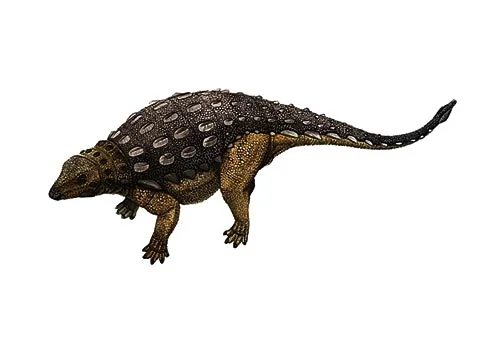Cedarpelta (Cedar shield - after the Cedar Mountain Formation)

See-dar-pel-tah
K. Carpenter, J. I. Kirkland, D. Birge & J. Bird - 2001
Herbivore
Estimated 6-7 meters long
Armoured Dinosaur
C. bilbeyhallorum (type)
USA, Utah - Cedar Mountain Formation, Mussentuchit Member
Early Cretaceous, 130-120 million years ago
Cedarpelta Facts
Cedarpelta is a fascinating dinosaur that lived during the Early Cretaceous period, around 130-120 million years ago. It was a herbivorous dinosaur that belonged to the ankylosaur family and was discovered in the Cedar Mountain Formation in Utah, USA. The name Cedarpelta is derived from “Cedar” (referring to the Cedar Mountain Formation) and “pelta” (a type of small, circular shield used by ancient soldiers). This dinosaur was named so because of the bony plates and spikes that covered its body, making it look like a walking shield.
Cedarpelta was a small to medium-sized dinosaur, measuring about 6-7 meters in length and weighing around 2 tons. Its body was covered in bony armor plates and spikes, providing protection against predators. It also had a large, bony club at the end of its tail, which it could use for defense.
The exact habitat of Cedarpelta is still unknown, but it is believed that it lived in forests and woodlands. Its herbivorous diet consisted of ferns, conifers, and cycads, which were abundant during the Early Cretaceous period.
Cedarpelta is considered a significant dinosaur for several reasons. Firstly, it is one of the few ankylosaur dinosaurs that have been discovered in North America, providing valuable information about the dinosaurs that lived on the continent during the Early Cretaceous. Secondly, its bony armor plates and spikes offer insights into the evolution of dinosaur defense mechanisms.
In conclusion, Cedarpelta is a unique dinosaur that provides important insights into the world of dinosaurs. Its bony armor and spikes make it an interesting subject for further study and provide valuable information about the evolution of dinosaurs.



